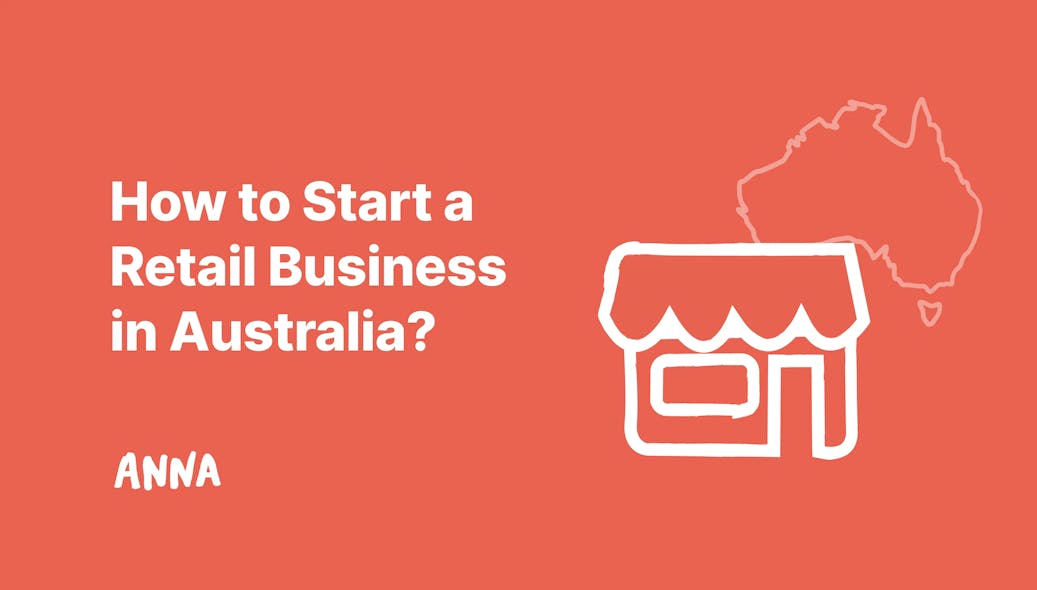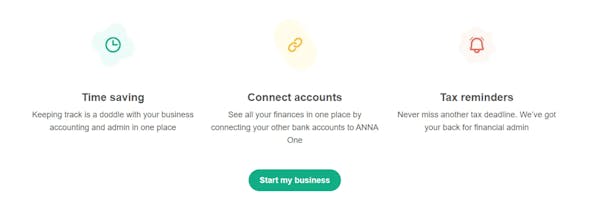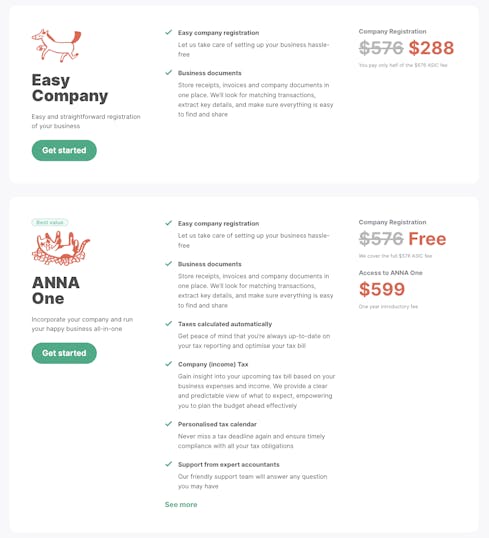
How to Start a Retail Business in Australia [Step-by-step Guide]


Learn how to start a retail business in Australia and get tips on planning, registration, and key strategies to launch your business today.

In 2023, the retail trade industry in Australia saw a gross operating profit of approximately 8.18 billion Australian dollars, highlighting the sector's profitability and potential.
However, it's essential to note that 45% of consumers research products online before making in-store purchases, while 17% use physical stores to research before buying online.
This shift in consumer behavior highlights the importance of a unified strategy encompassing online and offline retail business channels.
These figures vividly depict the market's dynamic nature and challenges.
You'll need meticulous preparation and strategic planning to succeed in a retail business.
Today, we will guide you through the essential steps to start a retail business in Australia and provide valuable tips to help you navigate this exciting journey.
Let's begin!
Top 10 Steps to Start a Retail Business in Australia
1. Conduct Market Research
Imagine stepping into the retail world without a map – that's what skipping market research feels like.
In Australia, this step is your compass, guiding you through the maze of customer needs, competitor moves, and market trends.
Questions to Ask Yourself
- Who are your potential customers?
- What do they crave?
- What are your competitors' strengths and weaknesses?
Use this intel to carve your unique niche and ensure you gather as much information as you can. The more you know, the better you'll strategize and thrive.
Ideas to Apply
🟢 Understand Customer Needs – Analyze purchasing habits and customer reviews to gain insights into what customers are looking for and how you can meet their expectations.
🟢 Survey Methodology – Utilize surveys to gather detailed information from potential customers, enabling you to make data-driven decisions.
🟢 Social Media Monitoring – Monitor social media platforms to observe and analyze public sentiment and trends, providing valuable insights into customer preferences and industry developments.
2. Create a Business Plan
Creating a business plan is the blueprint for your retail dream. It outlines your goals, strategies, and the steps you'll take to reach them.
Questions to Ask Yourself
- What are my business goals and mission?
- Who is my target market and competition?
- How will I finance and market my business?
Use this information to build a solid business plan that guides your operations and attracts investors.
Ideas to Apply
🟢 Executive Summary – Begin with an executive summary that highlights your mission and offerings, providing a snapshot of your business.
🟢 Market Analysis – Dive into market analysis to show your understanding of the target market and competitors, identifying opportunities and threats.
🟢 Organizational Structure – Detail your organizational structure, outlining key roles and responsibilities within your team.
🟢 Products or Services – Describe your products or services, emphasizing their benefits and what sets them apart in the market.
🟢 Marketing and Sales Strategies – Outline your strategies for attracting and retaining customers, including advertising, promotions, and sales techniques.
🟢 Funding Requirements – If you need funding, make a compelling case by detailing how much you need, how you will use it, and your plans for repaying any loans.
🟢 Financial Projections – Include financial projections such as income statements, cash flow statements, and balance sheets to showcase your business’s potential and financial health.
What’s your vision for your retail business?
3. Register Your Business
Registering your business is a vital step to legally operate in Australia. It's like planting a flag – it marks your official presence.
This process ensures that your business is recognized by the government and complies with all legal and regulatory requirements, whether you are a sole trader, partnership, or company.
It also helps in building credibility with customers and suppliers.
Questions to Ask Yourself
- What legal structure is best for my business?
- Have I chosen a unique and memorable business name?
- Am I aware of all the taxes I need to register for?
Use this information to ensure your business meets all legal requirements and stands on solid ground.
Key Requirements to Consider
🟢 Choose a Business Structure – Decide on the legal structure of your business, such as sole trader, partnership, company, or trust, as this will affect your tax obligations and legal responsibilities.
🟢 Register Your Business Name – Select a unique business name and register it with the Australian Securities and Investments Commission (ASIC) to protect your brand identity.
🟢 Obtain an Australian Business Number (ABN) – Apply for an ABN through the Australian Business Register (ABR), which is necessary for tax and business operations.
🟢 Register for Taxes – Ensure you register for necessary taxes, including Goods and Services Tax (GST) if your annual turnover is $75,000 or more, and Pay As You Go (PAYG) withholding if you have employees.
Are you ready to make it official?
💡 Pro Tip
If you want to avoid all the hassle of registration steps, let ANNA handle the entire process for you.
- Choose a name for your company that complies with ASIC's guidelines. ANNA's platform will help you check the availability of your chosen name.
- Enter your business information into the ANNA platform.
- ANNA will handle the company registration process with ASIC on your behalf. You'll be notified once your application is complete, and your company is officially registered.

With ANNA, you can focus on building your business while they take care of the paperwork.
4. Obtain Necessary Licenses and Permits
Imagine getting ready to open your doors, only to be stopped by red tape. You can avoid this by securing all necessary licenses and permits.
This crucial step ensures your retail business operates legally and smoothly in Australia, complying with local, state, and federal regulations.
Compliance helps avoid potential legal issues and demonstrates your commitment to running a legitimate business.
Questions to Ask Yourself
- What specific licenses and permits do I need for my business type and location?
- Have I obtained the necessary zoning and land use permits?
- Do I need health, safety, signage, or environmental permits?
Use this information to navigate the regulatory landscape effectively.
Key Licenses and Permits to Secure
🟢 Identify Required Licenses – Determine the specific licenses and permits needed based on your business type and location.
🟢 Zoning and Land Use Permits – Ensure your business location complies with local zoning laws and regulations.
🟢 Health and Safety Permits – Obtain these if you're dealing with food, beverages, or other regulated products.
🟢 Signage Permits – Apply for permits for your business signs to comply with local council regulations.
🟢 Environmental Permits – Acquire permits if your business activities have an environmental impact, such as waste disposal or emissions.
Are you prepared for a hassle-free launch?
5. Set Up Financial Systems
Establishing robust financial systems is essential for the efficient management and sustainability of your retail business in Australia.
Proper financial management helps track income and expenses, ensures compliance with tax obligations, and supports informed business decisions.
Questions to Ask Yourself
- Have I opened a dedicated business bank account?
- Am I using reliable accounting software?
- Do I have a solid bookkeeping system in place?
Use this information to build a strong financial foundation for your business.
Key Steps to Set Up Financial Systems
🟢 Open a Business Bank Account – Keep personal and business finances separate by opening a dedicated business bank account.
🟢 Invest in Accounting Software – Use reliable accounting software to track sales, expenses, and generate financial reports.
🟢 Establish a Bookkeeping System – Set up a solid bookkeeping system for accurate and up-to-date financial record-keeping.
🟢 Plan for Taxes – Allocate funds for tax obligations to avoid surprises and ensure compliance with GST, income tax, and employee-related taxes.
🟢 Establish Financial Policies – Develop financial policies for consistency in invoicing, payment processing, and expense management.
How will you ensure your business stays financially healthy?
💡 Pro Tip
To establish reliable financial systems for your retail business, we recommend using ANNA solutions.
Their ANNA One package offers comprehensive support to streamline your financial management:
- Comprehensive Tax Management: Handle company income tax, GST, and annual tax filing with ease.
- Automatic Expense Sorting: Optimize your tax bills by claiming more deductions.
- First-Year Tax Filing: Enjoy seamless tax filing for your first year, with all records kept in one place.
- Bookkeeping Efficiency: Maintain tidy books and enhance your tax efficiency with a higher bookkeeping score.
- Tax Reminders: Never miss a deadline with ANNA’s timely reminders for important tax dates.

To meet your bookkeeping needs, simply share your bank transactions, upload receipts and invoices, or create invoices directly with ANNA.
This ensures your financial records are accurate and up-to-date, paving the way for a successful retail business.
6. Find a Suitable Location
Selecting the right location is critical to the success of your retail business in Australia.
The location you choose can significantly impact foot traffic, brand visibility, and overall sales performance.
Questions to Ask Yourself
- Is the area high in foot traffic and visibility?
- Is the location accessible by public transport and does it have ample parking?
- How strong is the local competition, and can you stand out?
Use this information to find the ideal spot for your retail business.
Key Steps to Finding a Suitable Location
🟢 Research Areas – Look for locations with high foot traffic and strong visibility to attract customers.
🟢 Ensure Accessibility – Choose a spot that is easily accessible by public transport and offers ample parking for convenience.
🟢 Evaluate Competition – Study the presence and performance of competitors in the area to identify opportunities and challenges.
🟢 Check Local Regulations – Verify that your business activities are allowed under local zoning laws and regulations.
Where will your retail story unfold?
7. Source Suppliers and Inventory
Sourcing reliable suppliers and managing inventory effectively are essential steps for a successful retail business in Australia.
Quality products and a well-managed inventory ensure customer satisfaction and operational efficiency.
Questions to Ask Yourself
- Have I identified potential suppliers with good reputations and quality products?
- Have I negotiated favorable terms for pricing and delivery?
- Do I have a system in place to track inventory and avoid shortages?
Use this information to maintain a robust supply chain and efficient inventory management.
Key Steps to Source Suppliers and Inventory
🟢 Identify Potential Suppliers – Research and select suppliers known for their reliability and quality products.
🟢 Negotiate Terms – Discuss pricing, payment terms, and delivery schedules to establish favorable conditions.
🟢 Order Samples – Request product samples to assess quality before committing to larger orders.
🟢 Implement Inventory Management System – Use an inventory management system to track stock levels, manage reorders, and prevent shortages or excess inventory.
🟢 Review Supplier Performance – Regularly evaluate suppliers to ensure they continue to meet your business needs.
How will you keep your supply chain strong?
8. Market Your Business
Effective marketing is vital for attracting customers and establishing your retail business in Australia.
A well-crafted marketing strategy helps build brand awareness, drive sales, and foster customer loyalty.
Questions to Ask Yourself
- What are my marketing goals and budget?
- How can I build a strong online presence?
- What promotions or sales will attract my target audience?
Use this information to create a dynamic marketing strategy.
Key Steps to Market Your Business
🟢 Develop a Marketing Plan – Outline your goals, target audience, and budget to create a focused marketing strategy.
🟢 Build an Online Presence – Create a professional website and active social media profiles to reach a broader audience.
🟢 Engage on Social Media – Use social media posts and targeted ads to connect with and grow your audience.
🟢 Implement SEO Strategies – Optimize your website for search engines to increase online visibility and attract organic traffic.
How will you spread the word about your business?
9. Hire Staff
Hiring the right staff is essential for the smooth operation and success of your retail business in Australia.
Competent and motivated employees contribute to excellent customer service and overall business efficiency.
Questions to Ask Yourself
- What specific roles and responsibilities are required for my business?
- How can I attract and retain talented employees?
- What training and development programs will I implement?
Use this information to build a strong and dedicated team.
Key Steps to Hire Staff
🟢 Define Roles and Responsibilities – Clearly outline the roles and responsibilities to attract suitable candidates.
🟢 Create Job Descriptions – Develop detailed job descriptions that highlight required skills and qualifications.
🟢 Advertise Job Openings – Post job openings on various platforms, including job boards and social media, to reach a wide pool of potential candidates.
🟢 Provide Comprehensive Training – Offer training programs to familiarize new employees with your business operations and customer service standards.
10. Launch Your Business
Launching your retail business in Australia is the culmination of your hard work and preparation. This step involves executing a strategic plan to introduce your business to the market and attract customers.
Questions to Ask Yourself
- What unique promotions and entertainment can I offer at my grand opening?
- How can I effectively announce my launch on social media?
- What feedback mechanisms will I use to refine my offerings?
Use this information to ensure a successful and impactful launch.
Key Steps to Launch Your Business
🟢 Plan a Grand Opening Event – Organize a grand opening with special promotions and entertainment to attract a crowd and create excitement.
🟢 Announce on Social Media – Use social media platforms to announce your launch, engage with followers, and build anticipation.
🟢 Reach Out to Local Media – Contact local newspapers, radio stations, and online publications to cover your launch and generate publicity.
🟢 Offer Launch Promotions – Provide special promotions and discounts to entice customers and encourage initial sales.
🟢 Network with Local Businesses – Partner with nearby businesses for mutual support and cross-promotion.
A successful launch sets the stage for your retail journey. Are you ready to shine?
Conclusion
Embarking on the journey to start a retail business in Australia is exciting and challenging.
Plus, with a significant gross operating profit, the potential for success is immense.
However, navigating the complexities of registration, financial management, and compliance requires careful planning and the right support.
This is where ANNA One comes in.
Imagine a solution that simplifies the registration process and handles your bookkeeping, tax management, and financial reporting.
ANNA One takes care of the tedious tasks, allowing you to focus on growing your business.
Key Benefits of ANNA One:
👍 Stay on top of company income tax, GST, and annual filings without the stress.
👍 Ensure your expenses are categorized correctly for maximum tax efficiency.
👍 Keep your financial records tidy and organized, boosting your business’s credibility and operational efficiency.
👍 Never miss a crucial deadline with ANNA’s proactive notifications.

Getting started is simple:
- Select a Company Name: Use ANNA’s platform to ensure your chosen name is available and complies with ASIC guidelines.
- Enter Your Business Details: Provide the necessary information about your business.
- Relax While ANNA Registers Your Company: ANNA handles the entire process with ASIC, from start to finish.

Ready to turn your business dream into reality with ease and efficiency?






